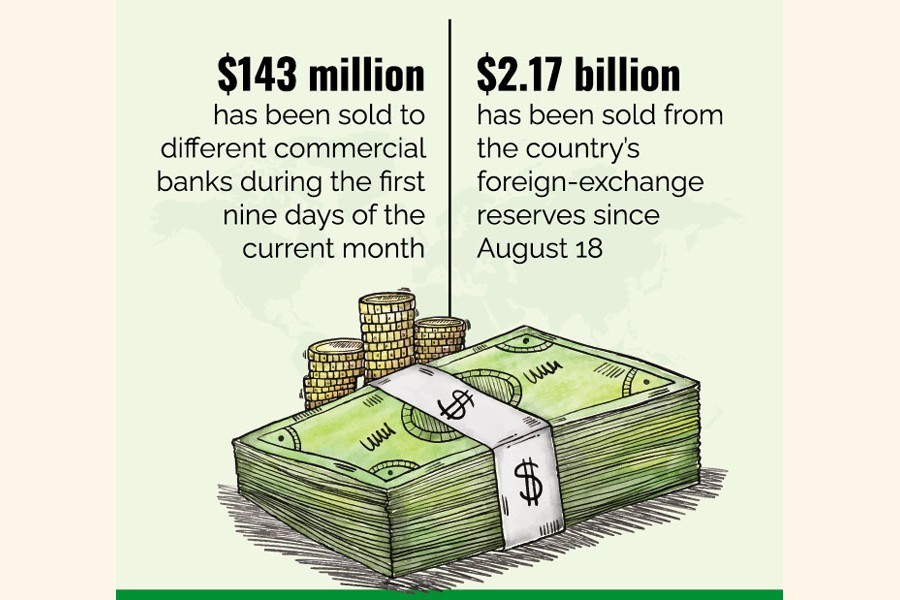The central bank continues to pump the US dollar into Bangladesh's overheating foreign-exchange market, releasing over $2.0 billion in nearly four months now, as the greenback enjoys great demand amid economic rebound.
As part of the money-market-managing move, the Bangladesh Bank sold US$30 million direct to three commercial banks on Thursday, adding up to the four-month tally.
A total of $143 million has been sold to different commercial banks during the first nine days of the current month, BB data showed, so that the rising price of the dollar couldn't buck up steeply in its exchange with the local currency.
A total of $2.17 billion has been sold from the country's foreign- exchange reserves since August 18 of the current fiscal year (FY), 2021-22, to the commercial banks as part of the central bank's ongoing support, according to latest official figures.
"We're providing such foreign-exchange support to the banks directly for clearing import-payment bills particularly for fuel oils, LNG (liquefied natural gas) and fertilizers," a BB senior official told the FE on Thursday.
He also said the central bank may continue providing such foreign- currency backup to the banks in line with the market requirement.
Meanwhile, the Bangladesh taka (BDT) had depreciated by Tk 1.0 against the US dollar during the period under review despite the selling of the greenback by the central bank to the banks for keeping the market stable.
The US dollar was quoted at BDT 85.80 on the inter-bank foreign- exchange market on the day--unchanged from the previous level. It was Tk 84.80 on August 17 last.
Market operators, however, said the demand for the dollar is still prevailing high mainly due to higher import-payment pressure, particularly for petroleum products and consumer items, including food- grains.
The actual import in terms of settlement of letters of credit (LCs) jumped by more than 51 per cent to US$23.38 billion during the July-October period of FY'22 from $15.45 billion in the same period of the previous fiscal.
On the other hand, the opening of LCs, generally known as import orders, grew by more than 52 per cent to $27.32 billion during the period under review from $17.94 billion in the same period of the FY'21.
On the other hand, lower inflow of remittance has also pushed up pressure on the inter-bank forex market, they explained.
The official figures show that the flow of inward remittance dropped by nearly 21 per cent to $8.61 billion during the July-November period of FY'22 from $ 10.89 billion in the same period of the previous fiscal.
However, the country's forex reserves have maintained a downturn in the last couple of months following lower flow of inward remittances and higher import-payment obligations.
Bangladesh's forex reserves dropped by $2.96 billion to $45.10 billion on Thursday from $48.06 billion this past August, the BB data showed.
"Our forex market is still facing a mismatch between inflow and outflow of foreign exchange despite higher export earnings in recent months," the treasury head of a leading private commercial bank (PCB) told the FE.
The pressure on the market may ease gradually in the coming months, the private banker predicts, without elaborating.


